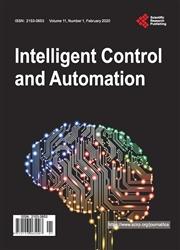The Role of a Novel Discrete-Time MRAC Based Motion Cueing on Loss of Control at a Hexapod Driving Simulator
引用次数: 1
Abstract
The objective of this paper is to present the advantages of Model reference adaptive control (MRAC) motion cueing algorithm against the classical motion cueing algorithm in terms of biomechanical reactions of the participants during the critical maneuvers like chicane in driving simulator real-time. This study proposes a method and an experimental validation to analyze the vestibular and neuromuscular dynamics responses of the drivers with respect to the type of the control used at the hexapod driving simulator. For each situation, the EMG (electromyography) data were registered from arm muscles of the drivers (flexor carpi radialis, brachioradialis). In addition, the roll velocity perception thresholds (RVT) and roll velocities (RV) were computed from the real-time vestibular level measurements from the drivers via a motion-tracking sensor. In order to process the data of the EMG and RVT, Pearson’s correlation and a two-way ANOVA with a significance level of 0.05 were assigned. Moreover, the relationships of arm muscle power and roll velocity with vehicle CG (center of gravity) lateral displacement were analyzed in order to assess the agility/alertness level of the drivers as well as the vehicle loss of control characteristics with a confidence interval of 95%. The results showed that the MRAC algorithm avoided the loss of adhesion, loss of control (LOA, LOC) more reasonably compared to the classical motion cueing algorithm. According to our findings, the LOA avoidance decreased the neuromuscular-visual cues level conflict with MRAC algorithm. It also revealed that the neuromuscular-vehicle dynamics conflict has influence on visuo-vestibular conflict; however, the visuo-vestibular cue conflict does not influence the neuromuscular-vehicle dynamics interactions.一种基于离散时间MRAC的运动线索在六足机器人驾驶模拟器失控中的作用
本文的目的是在模拟驾驶系统中,从参与者在急弯等关键机动过程中的生物力学反应角度,比较模型参考自适应控制(MRAC)运动提示算法相对于传统运动提示算法的优势。本研究提出了一种方法和实验验证来分析驾驶员的前庭和神经肌肉动力学响应与六足驾驶模拟器中使用的控制类型有关。对于每种情况,记录驾驶员手臂肌肉(桡腕屈肌、肱桡肌)的肌电图(EMG)数据。此外,通过运动跟踪传感器从驾驶员的实时前庭水平测量中计算滚转速度感知阈值(RVT)和滚转速度(RV)。为了处理肌电图和RVT数据,采用Pearson相关和显著性水平为0.05的双向方差分析。此外,分析了手臂肌肉力量和侧滚速度与车辆重心横向位移的关系,以评估驾驶员的敏捷性/警觉性水平以及车辆失去控制特性,置信区间为95%。结果表明,与经典的运动线索算法相比,MRAC算法更合理地避免了附着损失、控制损失(LOA, LOC)。结果表明,与MRAC算法相比,LOA避免减少了神经肌肉-视觉线索水平的冲突。神经肌肉-载体动力学冲突对视觉-前庭冲突也有影响;然而,视觉-前庭提示冲突不影响神经肌肉-载体动力学相互作用。
本文章由计算机程序翻译,如有差异,请以英文原文为准。
求助全文
约1分钟内获得全文
求助全文

 求助内容:
求助内容: 应助结果提醒方式:
应助结果提醒方式:


